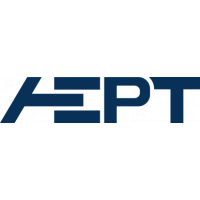Erosion of an aluminium oxide surface as well as a formation of an aluminium oxide coating on an aluminium substrate, comparable with erosion and oxide formation induced by plasma electrolytic oxidation (PEO), can be caused at atmospheric pressure conditions by a DBD-like (dielectric barrier discharge) plasma jet. Obtained experimental results conform a previously assumed similarity of the erosion mechanisms induced by the atmospheric pressure DBD-like plasma jet and PEO microdischarges. The mechanism of a predominantly inward growth of the oxide layer during PEO processing is substantiated based on a comparison of aluminium oxide erosion and oxide layer deposition by a treatment with the considered He-plasma jet and a PEO process.
| Field | Value |
|---|---|
| Publisher | |
| Authors | |
| Release Date | 2023-04-11 |
| Identifier | 75e1dab1-af1a-42a6-a710-12ef83376410 |
| Permanent Identifier (URI) | |
| Is supplementing | |
| Plasma Source Name | |
| Plasma Source Application | |
| Plasma Source Specification | |
| Plasma Source Properties | DBD-like He-plasma jet: Pure helium (Alphagaz, 5.0) is transported with a gas flow of 500 sccm through a quartz capillary with an inner diameter of 1 mm and a wall thickness of 0.25 mm. A high-voltage electrode (a coiled copper wire) is placed around the quartz tube at a distance of 20 mm from the open end of the capillary. The high-voltage pulse sequences have a repetition frequency of 4 kHz and a sequence duration of 10 μs. Each sequence consists of high-voltage pulses (up to about 20 kV) with a frequency of about 700 kHz and a damped amplitude.
PEO microdischarge ignitions: A cylindrical, double-walled borosilicate vessel is used as electrolytic cell. Two opposite, optical-grade, quartz glass windows with a diameter of 40 mm ensure light transmission down to λ = 200 nm. A stainless steel cylinder with a diameter of 4 mm is used as cathode. The substrates for the PEO process are aluminium AW-6061 plates with a dimension of 20 mm × 20 mm × 2 mm, as well. These substrates serve as anode during the process.
This first anodisation phase is imitated by a high voltage anodisation treatment of 3 min at a direct current (DC) voltage of 250 V and current density related to the anode surface of approximately 0.125 A/cm^2. To ensure, that no breakdown appears, the voltage 250 V is chosen, which is roughly in the middle between the typical maximum of anodisation voltages at around 80 V and the breakdown voltage of the PEO process at around 470–480 V in this setup. |
| Plasma Source Procedure | DBD-like He-plasma jet: As substrate, small plates of an aluminium alloy (AW-6061) with a dimension of 20 mm × 20 mm × 2 mm are used. The gas flow dynamics of the plasma jet effluent can be influenced by additional lateral gas flows. The substrate surface is covered with two glass plates of 1 mm thickness and with polished edges, which are pressed together to study an influence of a thin dielectric slit on the erosion of aluminium or an aluminium oxide layer.
PEO microdischarge ignitions: Distilled water with the addition of 1 g/l potassium hydroxide serves as electrolyte for both processes, the preliminary anodisation and the PEO process. |
| License | |
| Plasma Medium Name | |
| Plasma Medium Properties | The DBD-like He-plasma jet is operated with pure helium (Alphagaz, 5.0), which is transported with a gas flow of 500 sccm through a quartz capillary with an inner diameter of 1 mm and a wall thickness of 0.25 mm. Two additional lateral gas flows, which amount to 1 slm, produce gas flow swirls on the substrate surface.
Plasma electrolytic oxidation is performed with an solution of distilled water with the addition of 1 g/l potassium hydroxide. |
| Plasma Medium Procedure | During the substrate treatment with the DBD like He-plasma jet, the plasma jet nozzle is moved with a velocity of about 1 mm/s along the slit. The distance between the plasma jet nozzle and the glass plates surface amounts to 2 cm. |
| Plasma Target Name | |
| Contact Name | Gembus, Jan-Luca |
| Plasma Target Properties | Aluminium alloy (AW-6061) with a dimension of 20 mm × 20 mm × 2 mm. |
| Contact Email | |
| Plasma Diagnostic Properties | High-speed camera (Phantom VEO 440L 1MP; Vision Research): frame rate of 10 000 fps, exposure time of 99 μs and image resolution of 512 × 512 pixels.
he structure and composition of the treated substrates are characterised by surface scanning electron microscopy and energy dispersive x-ray spectroscopy using a scanning electron microscope (SEM)/energy dispersive x-ray spectroscopy (EDS) microscope (JSM6510, JEOL). |
| Public Access Level | Public |
| Plasma Diagnostic Name | |
| Funding Agency | |
| Project | |
| Subproject |
Data and Resources
- Figure 3jpeg
SEM image of the surface of an aluminium substrate after preparation, namely...
Download - Figure 10tif
SEM images with different magnification of an anodised aluminium substrate (...
Download


![[Open Data]](https://assets.okfn.org/images/ok_buttons/od_80x15_blue.png)